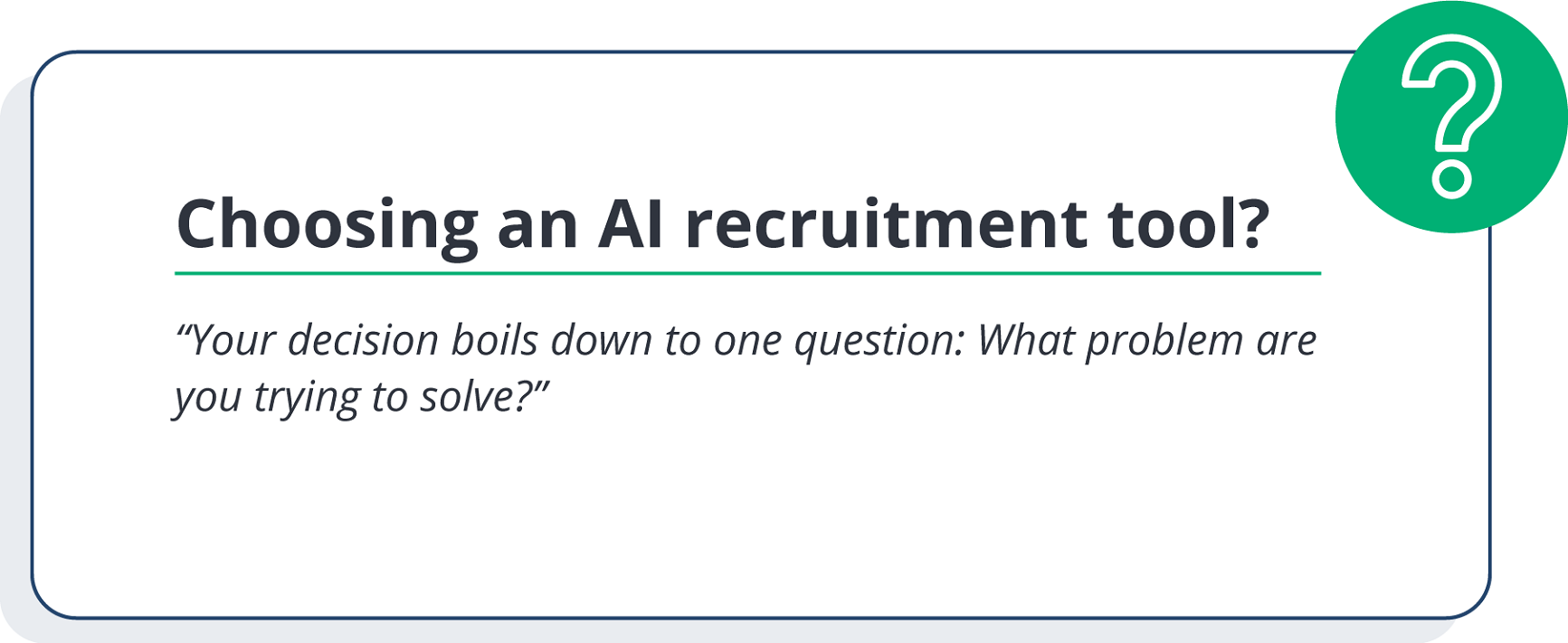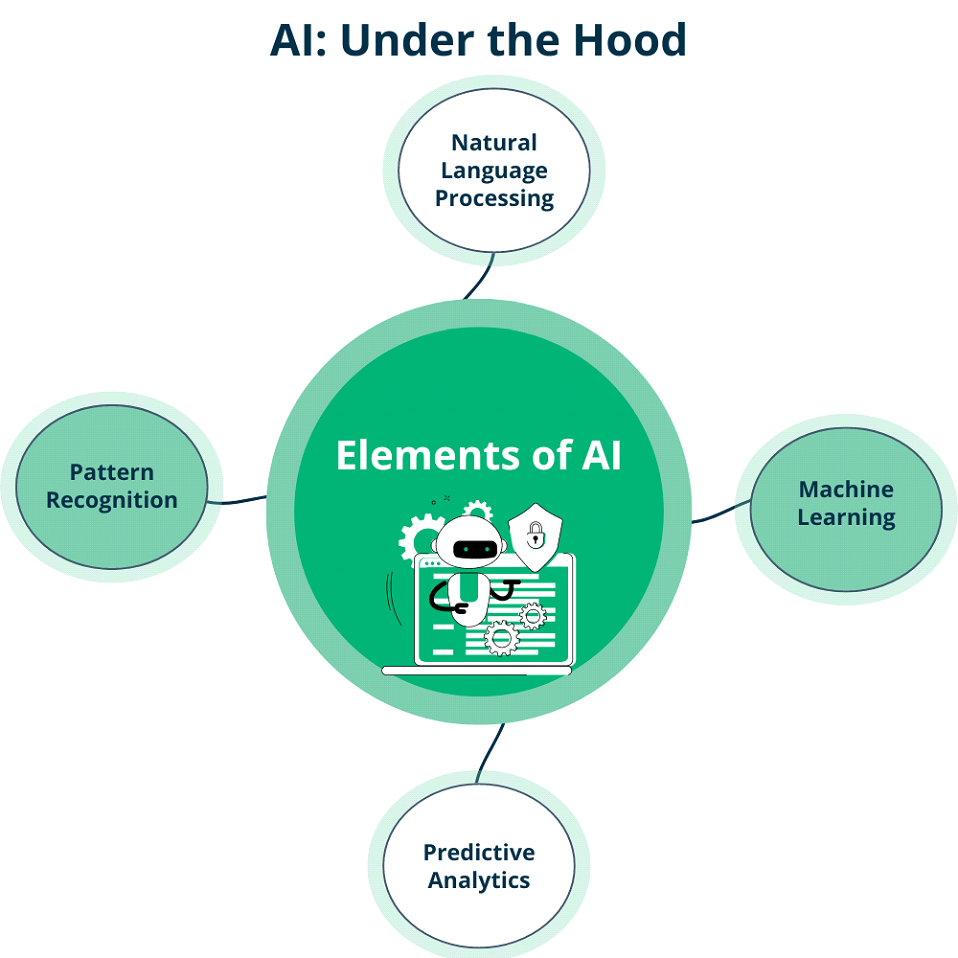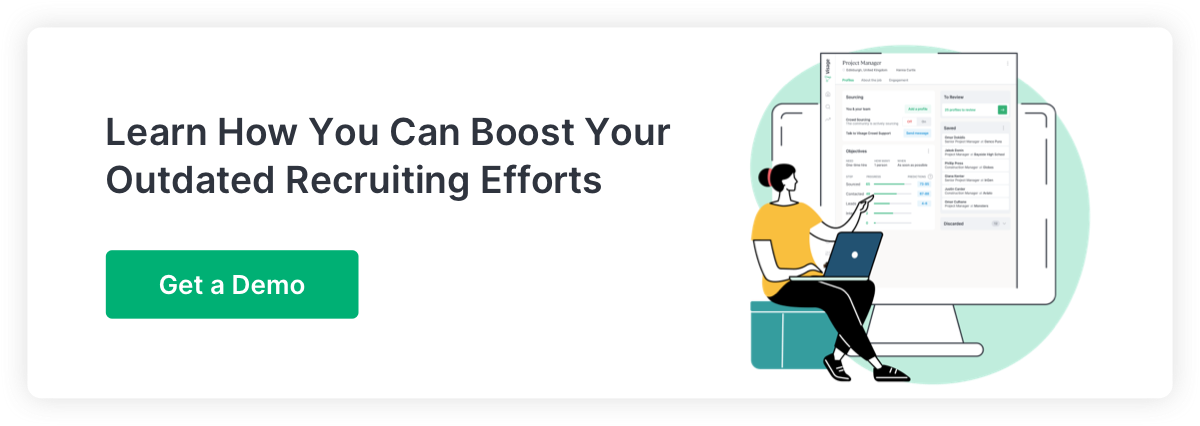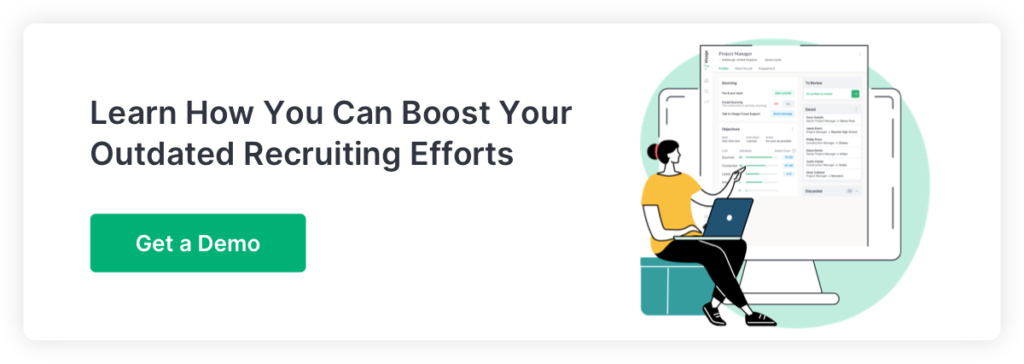The explosion of AI recruiting tools on the 2024 market promises a life filled with rainbows and unicorns to overworked, underpaid recruiters scrabbling for star candidates in a tight field. But the overwhelming number of choices can lead to stage four “analysis paralysis” – or a budget broken by selecting a tech stack that doesn’t do the job.
Choosing an AI recruitment tool boils down to one question: what problem are you trying to solve?

AI recruitment tools can and do solve problems, so let’s take a look at some of the AI problem-solvers around right now.
Why AI? How It Works
AI-powered tools can improve accuracy and save recruiters time for core functions by automating repetitive – but vital – manual tasks. AI’s potential to power up the recruitment cycle is built on four key elements:
Natural Language Processing (NLP) uses machine learning to understand and interpret human language through text analysis and speech recognition.
Resumé parsing, chatbots for scheduling, candidate queries, interview transcription and analysis, and sentiment analyses of candidate communications all happen courtesy of NLP.
Machine Learning enables computers to learn from data without prior explicit programming to improve results over time and includes:
- Predictive Analytics. A type of machine learning that uses historical data to predict results. For recruitment, it can predict things like candidate performance, recruitment needs, and how much effort you’ll need to source x number of candidates for y hires.
- Pattern Recognition. This type of machine learning uses algorithms to spot patterns or trends in large quantities of data. Its applications support tasks like skills gap analyses, candidate matching, and monitoring diversity.
You can choose to leverage each of these components as a standalone, single-use AI recruiting tool.
However, a multi-functional recruiting tool or platform typically integrates all of them to perform multiple recruitment cycle tasks. You’re looking at:
- Sourcing tools that scan databases and online profiles to identify candidates who match your requirements.
- Screening tools that use algorithms to review and filter candidate resumes and job applications based on predefined criteria.
- Interviewing tools to schedule interviews, create interview questions, and automate note-taking.
- Engagement tools to keep candidates interested and engaged during the nurturing stage of the candidate funnel.
AI Recruiting Tools: Our Favorites for 2024
To help you wade through the robust market of available AI recruiting tools, we’ve picked four favorites that we think are making a massive impact on talent sourcing and recruitment strategies right now.
1.Metaview
Metaview is a super-useful AI-powered tool that helps you improve almost every aspect of candidate interviewing by:
- Automating note-taking, which allows you to be present with the candidate instead of half attending them while you’re note-taking.
- Presenting notes in a clean, clear, question and bullet-point answer format, which you can edit and customize to be automatically re-written, reduced, snippeted, and shared with colleagues.
- Extracting and summarizing data based on natural language questions. For instance, if you’d like to focus on a candidate’s leadership experience, Metaview will pull out and cite the data.
- Summarizing multiple interviews of the same candidate so all your colleagues have a single source of truth to work from.
Co-founder Siadhal Magos says Metaview gives you “AI-generated, superhuman-quality interview notes,” and we have to agree.
Why We Like Metaview
All the reasons. But mainly because at Visage, we’re big on human connection, and the note-taking automation gives you the power to be really present with candidates and focus solely on them.
It makes for richer, more useful conversations and gives the candidate a better experience. If you don’t hire them this time, it offers you a starting point for nurturing them as second-chance candidates for other roles.
In addition, what recruiter wouldn’t jump at the chance to save hours otherwise spent revising their notes? Metaview’s clients say it saves them a working day a week. And the downside? You’ll have to find something else to do with your hands when you’re interviewing.
2.Pymetrics
Pymetrics’ aim is to find the best person for the job by focusing on soft skills assessments and behavioral data. It leverages cognitive science and AI to gamify assessments across 12 cognitive and emotional skill areas. This novel approach helps recruiters by:
- Reducing bias and creating a more diverse talent pool by ditching traditional resumé metrics in favor of inherent abilities.
- Using thousands of data points to best-match candidates’ unique behaviors and skills to the right roles, or check how they’re likely to fit with company values and culture.
- Giving candidates a good experience, whether they’re hired or not: each candidate receives personalized insights about their own soft skills, and can practice the games as much as they want.
Why We Like Pymetrics
Usually, when we hear “AI” and “soft skills assessment” in the same sentence, we get a little jittery because so much can go wrong. But what we like about Pymetrics is that they get it right. Pymetrics has a “fairness-first” approach to assessment, evidenced by an emphasis on stringently tested algorithms, neurodivergent-friendly modifications, and independent auditing. It’s even created a “worker advisory council” of candidates who beta-test and provide feedback.
3. Filtered.ai
Filtered.ai is an AI co-pilot that uses a range of techniques like NLP, computer vision, and large language models (LLMs) to gather insights into candidates as they travel the hiring funnel. It focuses on screening and live candidate interviews and includes a ton of useful functionality, including:
- A selection of assessment methodologies – challenges, multiple choice, problem-solving, etc.
- Soft skills assessments
- Multi-faceted fraud detection tools
- Customizable candidate insight summaries
What makes Filtered.ai unique is its response to a candidate’s use of AI to ace interviews. There’s no judgment. For one company, using ChatGPT to answer a coding question quickly and correctly shows an efficient use of time, but to another, it’s cheating.
During the assessment, Filtered.ai is able to verify candidate identity, detect which tabs are open, and detect other people onscreen in order to counter candidates getting help from the internet or other people during the assessment process.
Why We Like Filtered.ai
We love the functionality, but what makes Filtered.ai special is that it’s one of the few tools we’ve seen that screens for fraud vigorously, but ethically. It’s not a secret system: all tools are transparent, and Filtered.ai never controls a candidate’s IT. Every candidate must opt in.
Filtered.ai CEO Rocky Paap says, “We’ve heard from our clients that most candidates love the idea of a level playing field where cheaters can’t cheat.”
4. Poetry
Poetry brings the traditions and usefulness of sales enablement to the world of recruiting. This recruitment enablement workspace helps recruiters perform everyday tasks more quickly and easily. Every recruiter is a marketer, whether they like it or not, so recruitment enablement tools are a welcome and natural evolution.
“Every Recruiter is a marketer,
whether they like it or not”
Instead of giving recruiters a LinkedIn license and an Indeed account and telling them to get on with it, Poetry offers a user-friendly dashboard that brings job sourcing locations and recruiting assets together in one place.
The dashboard is built on 30 native tiles – each a Poetry-engineered solution – and it’s customizable to add third-party solutions. It’s themed across marketing, operations, learning, and tools, and includes more detailed tasks of the recruiter’s journey, like:
- Research that includes tools to create profiles, interview questions, and other information on a job role, using generative AI based on significant prompt engineering.
- Sourcing using a simple Boolean string creator and Google search for a list of potential candidates.
- Outreach – choosing or creating messages filtered according to sentiment and readability and checked for bias.
Why We Like Poetry
What’s not to like about having everything in one place? But that’s the least of it. We love Poetry’s ability to create a playbook for each role, building an array of on-brand assets like job persona, job ad, elevator pitch, Boolean string, social media outreach, candidate interview, branded images, offer, and pretty much whatever else you want – in under two minutes.
Bonus: Hopward
Hopward, powered by Visage, aims to democratize recruitment by bringing a recruitment team’s power and expertise to small businesses and other organizations that don’t have specialized recruitment functions or the budget to hire experts.
It does this by leveraging generative AI’s opportunities, acting as a recruiter co-pilot with a ChatGPT-like interface. Basically, clients can chat their way to a perfect hire.
“Clients can change their way to a perfect hire.”
-Joss Lefrancois, CEO, Visage
It’s powered by the Visage sourcing engine, so clients have ready access to all the candidates and a team of 4000 global talent sourcers. It includes the context of job descriptions and candidate profiles behind them, so users aren’t just hurling questions into the void and hoping for the best.
Because it’s user-driven, Hopward does the tasks it’s asked to do, like:
- Match candidates via user-defined criteria.
- Answer ad-hoc, super-bespoke questions like, “Which of these candidates has more sales experience in France?”
- Summarize candidates’ strengths and weaknesses for colleagues.
- Write personalized messages – e.g., candidate rejection letters and hiring recommendations.
Why We Like Hopward
It’s our product. We don’t just like it—we love it. We love it because it’s kicking down barriers. Hopward makes it easier and cheaper for small companies, with or without a recruiter, to find quality candidates and fill cornerstone positions. It can also help candidates find otherwise hidden job opportunities that are right for them.
Why did we decide to do this? I’ve been where many startups are today: I needed to find the right person with the right background to build the foundation of what is now Visage. I was fortunate enough to have an early version of the platform to help me. Otherwise, I would have paid an agency 30%+ of my hire’s starting salary.
AI Recruiting Tools Need Humans, Too
We’re impressed with AI’s power to help talent sourcers and recruiters get better results more quickly, but it’s important to remember that AI can’t replace the authenticity and warmth of human connection that we believe lies at the heart of the recruitment process.
The intent behind AI is everything, and we should all be having big conversations about ethical AI. We’ve built our Visage platform on transparency, and we work constantly to reduce bias and increase fairness throughout the recruiting process. Why not find out how we do this today?
CEO of Visage & Hopward, Joss is a 15-year veteran in the recruitment industry and a passionate thought leader in optimizing talent acquisition for companies big and small. Hailing from France, but at home on his ranch in Austin, TX, he enjoys free time with his wife and son and plays polo.

